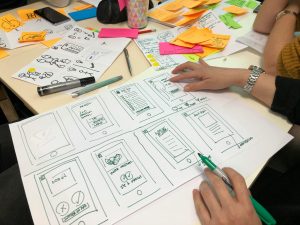From Grading to Guidance: How AI is Redefining Teacher Roles
In today’s fast-paced technological landscape, artificial intelligence (AI) has emerged as a game-changing force in various industries. From self-driving cars to personalized online shopping, AI has proven its ability to transform the way we live and work. And one field that has recently seen a significant shift due to AI is education. With its potential to automate and enhance various aspects of teaching, AI is redefining the roles of teachers. One particular aspect that has seen a major transformation is the traditional practice of grading. In this article, we will explore how AI is revolutionizing teaching by shifting the focus from grading to guidance.
The Changing Role of Teachers
Gone are the days when a teacher’s role was limited to grading assignments and tests. With advancements in AI, teachers now have access to various tools and technologies that can assist in delivering effective education. This has resulted in a shift in the traditional teacher-student relationship – from the teacher being the sole authority to a more collaborative and interactive approach. Teachers are being empowered to be facilitators and guides rather than simply evaluators.
From Grading to Guidance
In a traditional classroom setup, teachers would spend a considerable amount of time grading papers and providing feedback. However, AI has made this process faster and more efficient. With automated grading systems, teachers can now focus on providing personalized guidance and support to their students. By utilizing AI to handle the grading process, teachers can allocate more time to connect with their students, identify their strengths and weaknesses, and provide personalized assistance accordingly.
Personalized Learning
AI-powered systems have the ability to analyze vast amounts of data and provide personalized learning experiences for students. These systems can track a student’s progress, identify gaps in their understanding, and provide targeted learning material to bridge those gaps. This not only helps students to learn at their own pace but also enables teachers to deliver tailored support and guidance to each student.
Enhanced Teaching Strategies
AI is not here to replace teachers, but rather to assist and enhance their teaching strategies. By automating tasks like grading and data analysis, teachers can use their skills and expertise to develop new teaching methods and approaches. This allows them to create more engaging learning experiences and cater to the different learning styles of their students.
Empowering Teachers and Students
AI is also empowering teachers and students by giving them access to vast amounts of information and resources. Advanced AI systems can recommend relevant educational material, provide real-time feedback, and even assist in creating lesson plans. This allows teachers to focus on teaching, while students have the freedom to explore and learn at their own pace.
Potential Challenges
It is important to note that while AI has the potential to revolutionize education, it also comes with its own set of challenges. One of the main concerns is the ethical use of AI in education. There are concerns about student data privacy and the potential for bias in AI-powered systems. It is crucial for educators to carefully evaluate and monitor the use of AI in education to ensure ethical and unbiased implementation.
Conclusion
AI is transforming the traditional roles of teachers, shifting the focus from grading to guidance. With its ability to automate tasks and provide personalized learning experiences, AI is empowering teachers and students to collaborate and create a more effective learning environment. As AI continues to advance, its potential to redefine teacher roles and enhance education will only increase.










